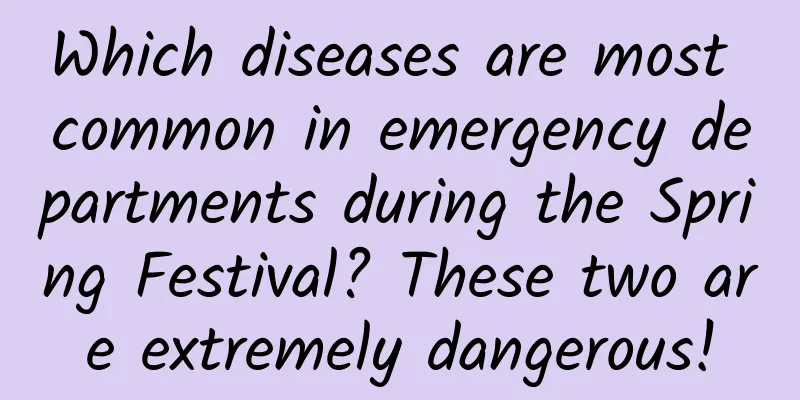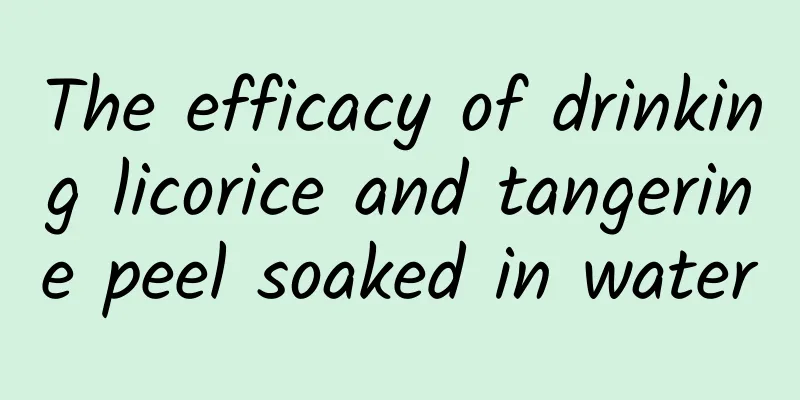New discovery! This cell can repair liver damage!

|
my country has the highest prevalence of liver disease in the world, with approximately 300,000 to 400,000 people dying from liver disease each year. Liver failure is one of the major causes of death in patients with liver disease. Although the liver has the ability to regenerate after damage, in the case of acute liver failure (ALF), this regenerative ability is often a drop in the bucket, and emergency liver transplantation becomes the only treatment option. The shortage of donors has severely limited the clinical application of liver transplantation , with less than 1% of patients receiving liver transplantation each year. Therefore, we urgently need effective pro-regenerative therapies to enhance the liver's inherent regeneration and repair capabilities. Copyright images in the gallery. Reprinting and using them may lead to copyright disputes. To advance the understanding of human liver regeneration, researchers from the University of Edinburgh in Scotland used cutting-edge technologies such as single-nucleus RNA sequencing to deconstruct the process of human liver regeneration and discovered a type of cell responsible for repairing damaged liver tissue, namely the ANXA2+ migratory hepatocyte subpopulation. The related paper was published online in the journal Nature on May 1, 2024. Let us explore the mystery of liver regeneration together! Researchers from the University of Edinburgh in Scotland published a paper analyzing human liver regeneration. Image source: Nature magazine official website Deconstructing human liver regeneration through multiple modalities By screening human liver transplant samples from patients with acute liver failure and chronic liver disease, the researchers found that acetaminophen-induced acute liver failure (APAP-ALF) exhibited a significant proliferation of hepatocytes. Architecturally, acetaminophen poisoning can lead to confluent hepatocyte necrosis extending outward from the perivenous zone of the central lobule. Hepatocyte proliferation in the perinecrotic zone (PNR) is significantly increased compared with the residual viable zone (RVR). Pattern of lobular necrosis in acetaminophen-induced acute liver failure. Image source: Adapted from reference [3] To deconstruct human liver regeneration, the researchers used a multimodal approach, including single-nucleus RNA sequencing (snRNA-seq), spatial transcriptomics (ST), and multiplex single-molecule fluorescence in situ hybridization (MsmFISH), to establish a single-cell pan-lineage map of human liver regeneration, revealing that in acetaminophen-induced acute liver failure, residual human hepatocytes exhibit functional plasticity to compensate for the massive loss of pericentral vein hepatocytes. Discovering the New World ANXA2-positive migratory hepatocyte subsets Hepatocyte replenishment is a key process in liver regeneration. Given this, the researchers focused on hepatocytes in a single-nucleus RNA sequencing dataset and found a unique ANXA2-positive hepatocyte subpopulation that was significantly increased in acetaminophen-induced acute liver failure livers and exhibited a migratory morphology with membrane ruffles and extended lamellipodia. In acetaminophen-induced acute liver failure, ANXA2-positive hepatocytes increased significantly and had a migratory morphology. Image source: adapted from reference [3] In addition, the researchers also observed ANXA2-positive hepatocyte subpopulations in a mouse model of acetaminophen-induced acute liver injury, with a pattern similar to that found in humans, which also allowed the researchers to use the mouse model to study the dynamics of liver regeneration in more detail. Proliferate first or heal first? That is the question By observing the dynamic process of liver regeneration after acetaminophen-induced liver injury in mice, scientists found that there was a time difference between wound closure and hepatocyte proliferation: hepatocyte necrosis reached a peak 36 hours after acetaminophen treatment and decreased by more than 50% at 48 hours, while hepatocyte proliferation reached a peak at 72 hours, indicating that liver wound healing precedes hepatocyte proliferation. Time curve of liver wound closure and hepatocyte proliferation (Image source: adapted from reference 3) So how do liver wounds close so quickly? By marking proliferating liver cells, the researchers found that most of the liver cells in the necrotic area near the central vein were not newly proliferated, but rather a group of migrating cells. How do liver wounds close? Cell migration! To find out, the researchers used 4D intravital microscopy to study whether hepatocytes migrate in vivo after acetaminophen-induced liver injury. The results showed that when ANXA2-positive hepatocytes appeared (36 to 42 hours after liver injury), the hepatocyte sheets migrated collectively, membrane folds and lamellae were formed at the leading edge of the hepatocytes near the wound, and the necrotic area decreased by 19.4% during imaging. The mobility of hepatocytes in the peri-necrotic region (PNR) is significantly greater than that in the residual viable region (RVR). This suggests that the main cause of wound healing after liver injury is hepatocyte migration! ANXA2 in hepatocytes regulates wound closure The ANXA2 gene is a key marker for migrating hepatocytes in humans and mice, and previous studies have also shown that ANXA2 regulates cell migration in other disease settings. To determine the functional role of the ANXA2 gene in acetaminophen-induced liver injury in mice, the researchers specifically knocked down the Anxa2 gene in hepatocytes in vivo, and found that hepatocytes in the peri-necrotic zone (PNR) did not migrate and the liver wound could not close. This suggests that the expression of ANXA2 in hepatocytes regulates hepatocyte migration and wound healing during the regeneration of acetaminophen-induced liver injury. The liver wound cannot close after Anxa2 knockdown (the dotted line indicates the necrotic area) (Image source: adapted from reference 3) At this point, we finally understand the process of liver regeneration: after acetaminophen causes liver damage, the ANXA2-positive migratory cell group takes the lead and quickly closes the wound, and then other liver cells begin to proliferate rapidly to restore the liver structure. Does this sound a lot like wound healing in the skin? Yes, rapid reconstruction of the epidermal barrier is essential to prevent the invasion of pathogens, and rapid healing of liver wounds is also beneficial to restore the gut-liver barrier and prevent bacterial spread leading to sepsis and multiple organ failure. ANXA2-positive "leader" hepatocytes quickly close liver wounds (Image source: adapted from reference 3) Conclusion In ancient Greek mythology, Prometheus, who stole the fire of civilization for mankind, had his liver pecked by an evil eagle. The next day, his liver grew back again. This shows that humans discovered the powerful regenerative ability of the liver a long time ago. But to this day, the secret of liver regeneration has not been fully revealed. In this study, we saw an unexpected aspect of liver regeneration, which provides new ideas for promoting the rapid reconstruction of normal liver microstructure and developing therapies for gut-liver barrier repair. Let us look forward to the early application of these research results in clinical practice! References [1] Xiao, J., et al., Global liver disease burdens and research trends: Analysis from a Chinese perspective. J Hepatol, 2019. 71(1): p. 212-221. [2] Michalopoulos, GK and B. Bhushan, Liver regeneration: biological and pathological mechanisms and implications. Nat Rev Gastroenterol Hepatol, 2021. 18(1): p. 40-55. [3] Matchett, KP, et al., Multimodal decoding of human liver regeneration. Nature, 2024. 630(8015): p. 158-165. [4] Kpetemey, M., et al., MIEN1, a novel interactor of Annexin A2, promotes tumor cell migration by enhancing AnxA2 cell surface expression. Mol Cancer, 2015. 14: p. 156. [5] Babbin, BA, et al., Annexin 2 regulates intestinal epithelial cell spreading and wound closure through Rho-related signaling. Am J Pathol, 2007. 170(3): p. 951-66. [6] Headon, D., Reversing stratification during wound healing. Nat Cell Biol, 2017. 19(6): p. 595-597. Planning and production Produced by Science Popularization China Author: Li Yuhuan Jilin University Producer丨China Science Expo Editor: Yang Yaping Proofread by Xu Lai and Lin Lin |
>>: Can a vegetarian be a muscular man?
Recommend
The efficacy and function of rock vegetable
The medical value of rock lettuce is beyond our i...
The efficacy and function of tacai
Tacai is a medicinal material frequently used in ...
The efficacy and function of Acorus calamus
As people's living standards improve, they pa...
Beware! Being thin in old age does not equal living longer in old age! If you want to be healthy in old age, you should pay attention to your diet →
It is said that money cannot buy slimness in old ...
Go to the Xisha Islands to see the sea? No, go to see the soil!
“After returning from Xisha, I didn’t look at the...
The Arctic is turning greener
The Arctic region only accounts for about 5% of t...
What are the effects and functions of Amomum villosum powder?
Many friends should have some knowledge of Amomum...
For nucleic acid testing, you must read these 10 points!
◎ Dai Xiaopei, a reporter from Science and Techno...
The efficacy and function of pear branches
Speaking of pear branches, many people know that ...
Staying up all night will "activate" inflammation in the body
A report released by the Chinese Sleep Research S...
The takeaway you eat may have been made last year...
Data from an e-commerce platform once showed that...
Those common fancy home fertilization methods are actually useless...
It is better to eat without meat than to live wit...
Do you have a bad face shape? Maybe you have this bad habit in the past! The earlier you treat it, the less impact it will have.
When looking in the mirror Everyone's face sh...
The efficacy and function of Baxiancao
Eight Immortals Grass can clear away dampness and...









